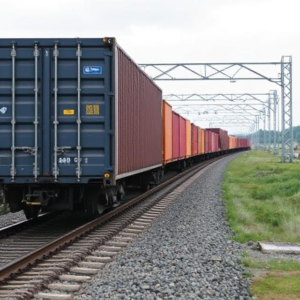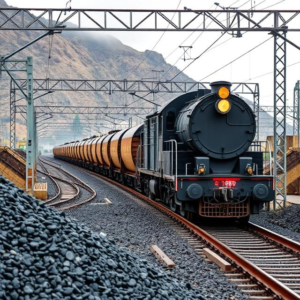Railway freight tracking systems are technologies used to monitor and track the movement of goods (freight) being transported by train. These systems help ensure that the cargo reaches its destination on time, safely, and without issues. Let’s break it down simply:
1. What is Freight Tracking?
Freight tracking is the process of following goods as they move from one place to another. When goods are shipped by rail, it’s important to know where the train is and when it will arrive. The tracking system helps provide real-time updates on the location of the cargo, making it easier for businesses and customers to stay informed.
![]()
2. How Does Freight Tracking Work?
Freight tracking systems use a combination of technology and sensors to keep track of shipments. Here are the key components:
- GPS (Global Positioning System): GPS technology is used to track the exact location of a train carrying freight. It helps provide updates on where the train is at any given moment. GPS devices are installed on the train or the freight car itself.
- RFID (Radio Frequency Identification): RFID is a technology used to automatically identify and track freight. Each freight car or shipment is tagged with an RFID chip. These tags can be scanned by sensors placed at different points along the rail network (such as at stations or rail yards) to provide updates on the movement of the freight.
- Barcode Scanning: Just like with RFID, barcodes are attached to packages or containers. When the freight passes through scanning points, the barcode is read, allowing the system to track its progress.
3. Real-Time Tracking and Monitoring
Once the freight is in motion, the tracking system provides real-time data. This means you can know where the train is and when it will arrive at various points along the way. This helps businesses plan for deliveries, keep customers informed, and adjust logistics if needed.
For example:
- Track Points: The system will track when the freight passes certain points, such as specific stations or rail yards. This provides updates on the estimated time of arrival.
- Condition Monitoring: Some systems also monitor the condition of the freight (such as temperature or humidity) to ensure that sensitive goods are being transported safely.
4. Benefits of Freight Tracking Systems
- Improved Efficiency: By knowing the location of the cargo at all times, operators can make sure the train stays on schedule and that any delays are quickly addressed.
- Reduced Theft and Loss: If there is a problem, like if the train takes a wrong turn or goes off course, the tracking system can alert operators to prevent cargo theft or loss.
- Better Communication: Businesses and customers can get real-time updates on the location of their shipments, which helps with planning and transparency.
- Better Maintenance and Monitoring: The system can track the health of the freight cars and the train itself, alerting for any mechanical issues that need fixing, which helps prevent breakdowns.
5. Cargo Security
Tracking systems also help keep freight secure. For instance:
- Geofencing: This is a virtual boundary set up around a particular area. If a train carrying freight leaves this boundary (such as straying off the intended track), an alert is sent to operators.
- Alerts for Delays or Deviations: If the train is delayed or if the cargo moves in an unexpected direction, operators and customers are notified.
6. Tracking Interfaces
Freight tracking systems often come with user-friendly interfaces that can be accessed through apps or websites. These allow businesses to:
- Track shipments in real-time.
- View past shipments and analyze patterns.
- Get alerts for any delays or issues.
7. End-to-End Tracking
Some advanced systems offer end-to-end tracking, which means they can monitor the entire journey of the freight, from the moment it leaves the origin until it arrives at its destination. This may include various modes of transportation, like road, rail, and sea, and provide an integrated view of the whole shipment journey.
Conclusion
Railway freight tracking systems are important for managing and monitoring the movement of goods on trains. By using technologies like GPS, RFID, and barcode scanning, businesses can track their shipments in real-time, ensure that goods are delivered safely, and reduce the risk of theft or delays. The ability to monitor freight during its journey provides greater efficiency, better security, and smoother operations for everyone involved.
Keywords: Railway Data Analytics, Railway











